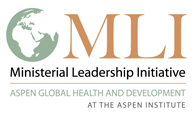What we're reading
 Photo Credit Dominic Chavez |
Leading Global Health will be on hiatus until the New Year. Until then, here’s what we’ve been keeping up with in the news.
The Economist: Miracle or Malthus
At the International Conference on Family Planning last month, a high level meeting was convened to discuss strategies for African countries to obtain the demographic dividend. This hot topic is continuing to garner international attention. The Economist recently published an article on the possible population outcomes for Africa: demographic disaster or demographic dividend. While showing signs of lowering fertility rates, African countries still face enormous challenges to slowing population growth. Cultural resistance, lack of contraceptive access, and weak political will are the traditional obstacles to reducing family size. However, the Economist points out that the high mortality rates are also a large barrier: “The demographic transition is the shift from high mortality and high fertility to low mortality and low fertility—and infant mortality in Africa remains stubbornly high: 85 babies die for every 1,000 live births.” The article reminds us that all of the puzzle pieces must be in place for the benefits of the demographic dividend to be reaped.
Developing countries: donors and recipients
A shift in the makeup of global aid has been slowly taking place over the past couple of years. While developed nations have been experiencing recessions, many developing nations have been growing. Brazil, South Africa, and India are among growing developing countries that are now using their wealth to set up their own aid agencies. India’s new Indian Agency for Partnership in Development will oversee an aid budget of over $11bn for the next five to seven years. “Developing world leads the way in global aid” reports that “non-traditional donors” are contributing a third of the new funding for relief efforts in the Horn of Africa. Not only new to the aid game, these new donors are taking nontraditional approaches says the article, “Brazil's programme is framed by appeals to solidarity and co-operation"; Russia, often called a "re-emerging" donor, says it is being a good neighbour by supporting low-income countries in the region.”
The importance of aid coming from developing countries was highlighted earlier this year by Sierra Leone’s Minister of Health Zainab Bangura. Cuba, South Africa, Nigeria, and North Sudan are some of the countries helping to bolster Sierra Leone’s health sector, Minister Bangura told MLI’s Leading Global Health blog. “This is truly south-south cooperation,” Bangura said.
Consistent global health aid, paired with recipient spending increases, translate into improved health outcomes
While the recession has slowed donor countries’ spending to improve health in developing countries down, it has not had the detrimental effect that many have predicted. Donor countries, including the United States, have actually increased spending for health. For the past two years, the Washington Post reports, “development assistance for health” grew an average of 4 percent a year. It is not the 17 percent growth that was experience between 2007 and 2008, but the current growth rate is comparable to that of the 1990s. Funds from donor countries combined with increased spending from recipient countries out of their own domestic budgets have translated into improved health outcomes. The World Health Organization recently announced that annual deaths from malaria have fallen 26 percent since 2000 and that 6.6 million people in poor countries are taking antiretroviral drugs. This is a huge leap from the only 200,000 that were taking antiretroviral drugs a decade ago.
Keyword Search
MLI works with ministries of health to advance country ownership and leadership. This blog covers issues affecting the ministries and the people they serve.
Connect with Us
![]()
![]()
Categories
Blogs We Like
- Africa Can End Poverty
- Africa Governance Initiative
- Behind the Numbers
- CapacityPlus
- Center for Global Health R&D Policy Assessment
- Center for Global Development: Global Health Policy
- Center for Health Market Innovations
- Global Health
- Global Health Hub
- Global Health Impact
- The New Security Beat
- PAI Blog
- RH Reality Check
- Save the Children
- Transparency and Accountability Program
Contact Us
Please direct all inquiries to
